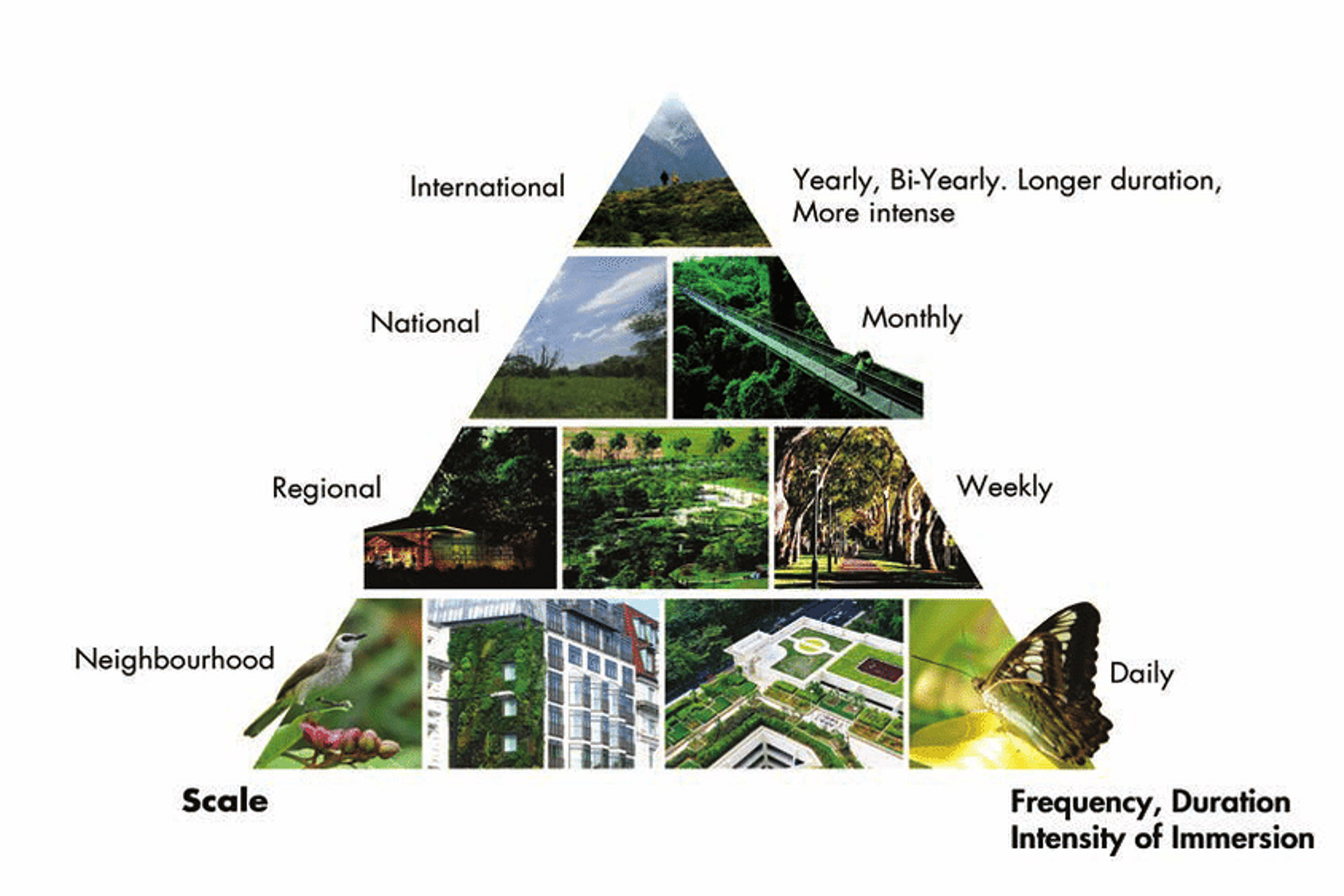How much time do you spend outside on an average day?
Is it,
Five minutes?
50 minutes?
5 hours?
Your answer will depend on a number of factors like,
Do you work from home? (less reason to leave the house)
Do you drive to and from your place of work, leaving your car in an underground or covered car park?
Does your work require you to spend time outside? (not just sitting in a vehicle)
If you’ve seen the statistics, you’ll know that the vast majority of us spend 88-90% of our time awake indoors, with an additional 3% of our time spent in a vehicle.
Hmm.
Does this matter?
I say it does because time in nature is fundamental to your health and well-being, not just for the feel-good factor but also because of the impact that time has on your heart health, immune system, stress levels, creativity, focus and sleep.
We worry that the prevalence of anxiety, depression, burnout and loneliness is still on the rise despite our best intentions to combat the issues.
Yes, progress is being made in some areas, but not enough, so let’s get back to the basics to remember,
- As humans, we evolved in nature.
- Our rapid shift to become urban dwellers is linked to the higher rates of mental distress, stress, and chronic disease now being expereinced.
- We thrive by spending time in green and blue spaces that nurtures our physical, emotional, cognitive, social, and spiritual well-being.
How much time in nature is enough?
I’m wary of absolutes that are frequently posited from held opinions, not always based on sound scientific evidence. Still, these so-called rules can be helpful as a guide to support your decision to do what is right for you in your situation and environment.
This is especially important because not everyone lives in a leafy green suburb with ready access to parks, bushland or the sea.
Greenspace inequity is real and affects those who are most vulnerable to the negative health impacts of little access to quality green space.
Introducing the Nature Pyramid

Conceptual diagram of the Nature Pyramid, 2012. (Concept by Tanya Denckla-Cobb and Timothy Beatley, University of Virginia, Department of Urban and Environmental Planning. Illustration prepared by Singapore National Parks Board.)
Tanya Denckla-Cobb from the University of Virginia came up with the idea for the nature pyramid, a metaphor similar to that used for dietary guidelines. It provides a basic framework that reminds us of the benefits of incorporating time in nature into our lives on a daily, weekly, monthly, and annual basis.
Rather than basing your nature experience on an expensive overseas trip, it’s about becoming aware of what’s on offer in your local neighbourhood and taking steps to taste nature more often.
Dr Rachel Hopman, a Professor of Psychology at the University of Utah, has simplified this concept into what she calls the 20-5-3 Rule.
Let’s look at what this rule entails.
- Twenty minutes in a green space, three times a week.
- Five hours in a semi-wild environment once a month.
- Three days off-grid once a year
Does this look doable to you?
Remember the numbers for time spent in nature are a guide only, they are not set in stone.
YOUR WEEKLY DOSE
Twenty minutes in a green or blue space three times a week.
That’s just one hour.
The issue I have with this is, it’s too little time.
The current minimum threshold required for your physical and mental well-being is 120 minutes a week.
So, let’s break down this rule a bit further and look at what you can do daily to get out into the great outdoors and start to reap the benefits of lower stress, lower blood pressure and better mood.
If you were going to be pedantic, 120 minutes divided across 7 days is 17 minutes and a few seconds.
The questions to be asking yourself are,
- Where can I go for my 17 minutes outside?
This comes down to being aware of what’s available in your neighbourhood. Do you know where your nearest parks, bushland or trail walks are?
Do you know the easiest way to get to these? Is there a bus route? Is there parking, if you have to drive?
The mantra is to find less concrete and more greenery - Do I have 17 minutes each day to get outside?
If your answer is no, then we have a problem that may boil down to priorities, or not believing enough in the value nature provides your health or is an excuse because you don’t actually enjoy being out in nature. - When can I go?
If early morning is too chaotic, what about lunchtime? And no, the excuse of “I don’t stop for lunch” won’t wash here. Taking 17 minutes for a lunchtime walk is energising and sets you up for a much more focused and productive afternoon, and it doesn’t take long before you look forward to this time. - What will I do?
Ideally, this would involve walking, but sitting in nature is fine too. If you’ve got a favourite spot, that’s your go-to space. It’s got your name on it (metaphorically speaking). The main thing is to cancel all other distractions – like your phone. This is not the time to make phone calls, listen to music or podcasts or check your emails. - What if it’s raining, 45 degrees Celsius or 40 degrees below?
Not every day is going to be a perfect day for being outside, so use your discretion. Can you change the time or location for your time outside to find greater shelter? Can you go for a longer duration on a different day?
Remember, this is about creating a habit of spending regular time in nature.
Look too, to mix it up. Is there an outdoor event you could get to, or what about scheduling a regular walk with family or friends, choosing different locations to keep it interesting?
Notice what type of place suits you the best.
Is it 17-20 minutes spent in your garden?
Or a lunchtime walk?
Or taking your grandkids to the local playground in the park?
YOUR MONTHLY DOSE
From small beginnings, now you can ramp up your nature engagement with a 5-hour monthly immersion.
Again, this is not about the total time, but looking at how you can get out for a half-day or longer. Do you have a national park within reasonable driving or public transport distance?
If you’re not far from the coast, how about a day trip to the seaside or a fishing trip?
These times are best scheduled to make them happen.
All you need is your calendar to mark your monthly trips.
Invite some friends or make it a family excursion.
Again, the idea is to separate yourself from urban intrusions. Turn your phone to silent, and only use it to take pictures.
Sign up to learn a new skill, like kayaking, golf, beach volleyball or rock climbing!
Maybe go for an overnight camp.
YOUR ANNUAL DOSE
This is where you can let your imagination go wild (within your budget of course!)
Ever since we started going on regular holidays off-grid, we knew there would be no turning back.
Three days is the minimum here. It can take that long for your brain to uncouple itself from all those incessant worries and work-related thoughts. There is something deliciously liberating about not being able to access Wi-Fi or the Internet.
No one can contact me, Yippee!
Yes, nomophobia can be painful. That’s the phantom pain associated with finding your phone is no longer connected to anything anymore, but then the gains are all positive. You start noticing more around you. You feel more relaxed. You’re sleeping better (and often for longer) and you’ve got this ridiculously big smile stuck on your face.
Happier, healthier and feeling great.
It doesn’t get better than that.
My caveat here is to be accessible somehow—satellite phone or EPIRB, for example. Tell someone where you’re going, when you expect to be back, and some emergency contacts. Travel with others and take spares of everything, including extra food and water.
While we would love to go to exotic places like the Antarctic, South America, and India, it is not always possible. So, which places can you get to?
Where do you love travelling to that is far away, but manageable and will provide you with some beautiful experiences and memories?
Over to you.
If you know time in nature helps you feel better, how can you use this 20-5-3 Rule to help you?
Because nature really is the best medicine for a better mood, mindset and mental wellbeing.


